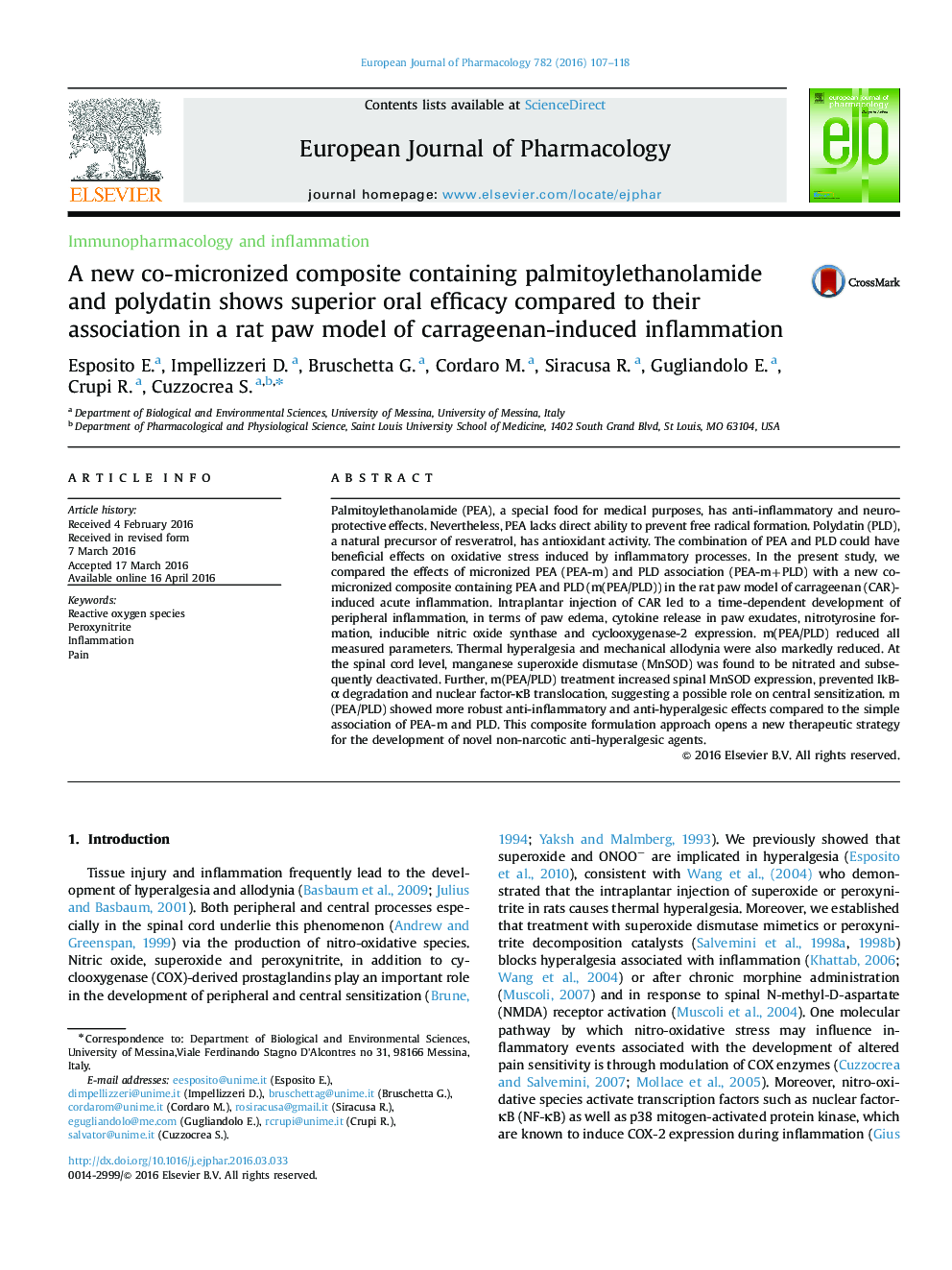| Article ID | Journal | Published Year | Pages | File Type |
|---|---|---|---|---|
| 5826764 | European Journal of Pharmacology | 2016 | 12 Pages |
Palmitoylethanolamide (PEA), a special food for medical purposes, has anti-inflammatory and neuroprotective effects. Nevertheless, PEA lacks direct ability to prevent free radical formation. Polydatin (PLD), a natural precursor of resveratrol, has antioxidant activity. The combination of PEA and PLD could have beneficial effects on oxidative stress induced by inflammatory processes. In the present study, we compared the effects of micronized PEA (PEA-m) and PLD association (PEA-m+PLD) with a new co-micronized composite containing PEA and PLD (m(PEA/PLD)) in the rat paw model of carrageenan (CAR)-induced acute inflammation. Intraplantar injection of CAR led to a time-dependent development of peripheral inflammation, in terms of paw edema, cytokine release in paw exudates, nitrotyrosine formation, inducible nitric oxide synthase and cyclooxygenase-2 expression. m(PEA/PLD) reduced all measured parameters. Thermal hyperalgesia and mechanical allodynia were also markedly reduced. At the spinal cord level, manganese superoxide dismutase (MnSOD) was found to be nitrated and subsequently deactivated. Further, m(PEA/PLD) treatment increased spinal MnSOD expression, prevented IkB-α degradation and nuclear factor-κB translocation, suggesting a possible role on central sensitization. m(PEA/PLD) showed more robust anti-inflammatory and anti-hyperalgesic effects compared to the simple association of PEA-m and PLD. This composite formulation approach opens a new therapeutic strategy for the development of novel non-narcotic anti-hyperalgesic agents.
